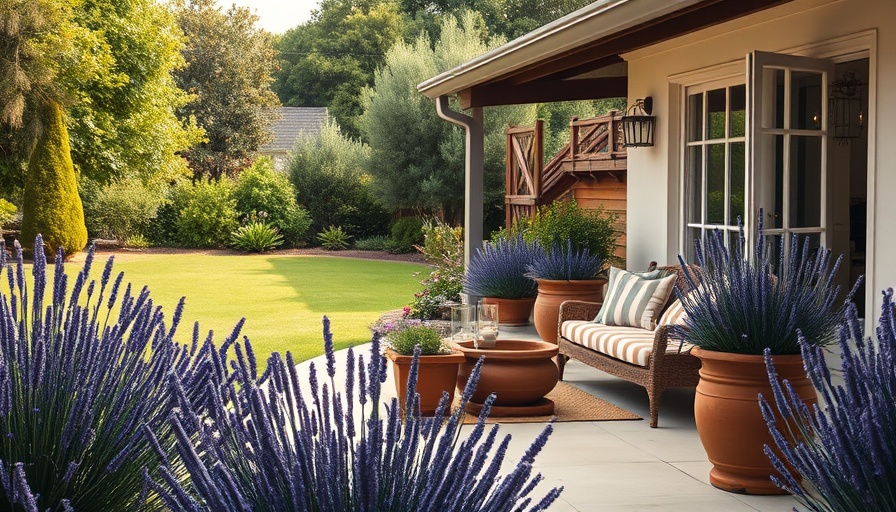
Why Choose Natural Plants to Repel Mosquitoes?
As homeowners seek to create comfortable spaces outdoors, the presence of mosquitoes can quickly diminish one's enjoyment of gardens and patios. Many people turn to chemical repellents, but these can often be harmful to the environment and your health. By tapping into nature's own solutions, you can cultivate a beautiful garden that not only enhances your outdoor sanctuary but also protects your family from pesky intruders. Let's explore the ten outdoor plants that act as natural mosquito repellents and learn how they can transform your gardening experience.
Lavender: A Fragrant Shield Against Mosquitoes
Among the most popular choices for mosquito-repelling plants is lavender. Its soothing scent is often associated with relaxation, yet it serves an active role in keeping mosquitoes at bay. Planting lavender near seating areas not only creates an inviting atmosphere but also works effectively as an organic deterrent. This resilient plant thrives in sunny spots and, once established, requires minimal watering. Additionally, its aesthetic appeal and delightful fragrance make it a garden favorite, doubling as a culinary herb in homemade products.
Citronella Grass: The Classic Must-Have
Citronella grass, another favored choice, boasts a strong lemony aroma that masks human scents, making it unattractive to mosquitoes. Consider positioning this lush grass around your patio or seating area, introducing a tropical feel while repelling bugs. Given its potentially large size, it's essential to monitor and provide adequate space for growth—this hardy grass thrives with sunlight and can flourish even in various soil types.
Marigolds: Colorful Defenders in Your Garden
Without a doubt, marigolds are a cheerful addition to any garden. Their bright blooms add an aesthetic touch while their scent works to deter mosquitoes. These perennial plants are also incredibly hardy, making them low-maintenance options for busy gardeners. Marigolds can be interspersed throughout your veggie patches for added pest control or arranged in vibrant clusters to create visual interest.
Scented Geraniums: A Blossoming Barrier
Known for their aromatic foliage, scented geraniums offer both beauty and functionality in repelling mosquitoes. Varieties such as lemon-scented geraniums excel in pots and around entryways, combining colorful blooms and refreshing fragrance. Easy to care for, they thrive in sunny locations with minimal watering, making them perfect for gardeners of all experience levels.
Bee Balm: The Pollinator's Favorite
As a stunning addition to any landscape, bee balm draws pollinators like bees and hummingbirds while managing mosquito populations. It boasts bright blossoms and an oregano-like scent that mosquitoes dislike. Planting this in areas with moist soil and ample sun not only beautifies your garden but also enhances ecological benefits through increased pollinator activity.
Lemon Balm: An Easy Grow
Lemon balm, part of the mint family, provides an effortless gardening experience with its lemony scent that mosquitoes avoid. It is forgiving, adapting well even in less-than-ideal conditions. Plant it in containers to prevent it from becoming invasive, allowing you to enjoy its aroma and pest-repelling abilities while maintaining control over its growth.
The Multifunctional Approach to Garden Design
As homeowners become more conscious of sustainable gardening practices, utilizing plants that repel mosquitoes serves more than just defense. Each of these plants also enriches your garden's biodiversity, attracting beneficial insects that can aid in pollination and natural pest control. Consider a landscape design that integrates these plants harmoniously. Not only will your outdoor space be visually appealing, but it will also function as a natural ecosystem, promoting health and enjoyment for your family and visitors.
Guidance for Planting and Care
Before diving into selecting which mosquito-repellent plants to incorporate, consider your garden's environment. For instance, assess the climate, sunlight availability, and soil conditions to choose the best plants for your space. Regular maintenance, such as pruning and periodic watering, will ensure your plants flourish and perform their dual role of beautifying your garden and deterring pests.
Conclusion: Transform Your Outdoor Spaces
Incorporating these mosquito-repellent plants into your garden not only creates an inviting atmosphere for relaxation and entertainment but also fosters a healthier, natural ecosystem. As you cultivate your outdoor haven, select plants that resonate with your gardening goals and personal style—each choice can enhance your outdoor living experience while helping maintain comfort away from those bothersome mosquitoes. Embrace these natural solutions to elevate your garden aesthetic while ensuring that your outdoor spaces remain an enjoyable retreat.
 Add Row
Add Row  Add
Add 


Write A Comment